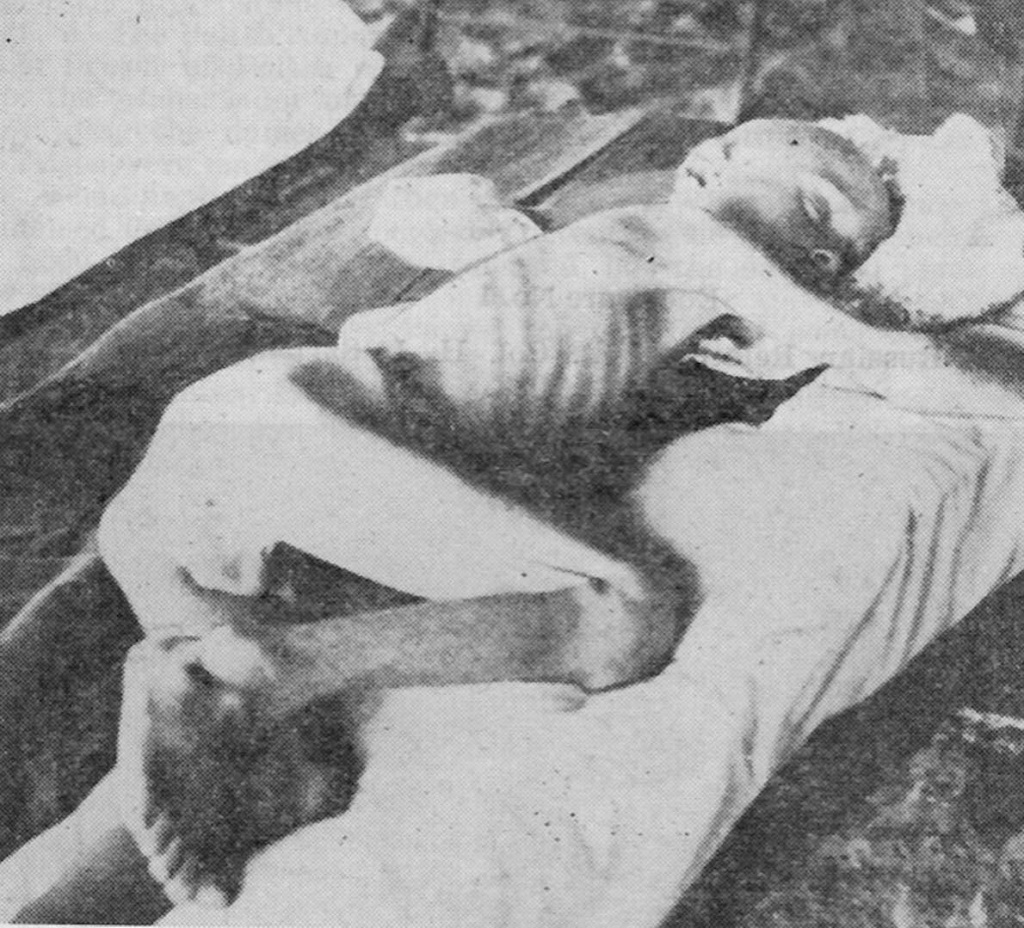Polish refugee children with a priest at Santa Rosa, Mexico
Polish refugee children with a priest, Santa Rosa Colony, Mexico. Julian Plowy Family Album.
Before being transported to Mexico from India in 1943 on a U.S. Navy ship, these Polish children were for close to two years prisoners in Soviet Russia along with their parents and families. Some of them lost their mothers and fathers, sisters, brothers, grandparents and other close family members. They witnessed unspeakable atrocities committed by Soviet communists.
After they were evacuated from Russia, first to Iran and later to Mexico, most of them recovered and prospered under the care of representatives of the Polish government-in-exile, Catholic nuns and priests, and workers of American relief organizations. Many of the children, however, died in Russia from illness and starvation, and some, too starved and weakened, died in Iran.
Lieutenant Colonel Henry I. Szymanski was a U.S. Army Liaison Officer to the Polish Army created under the command of General Władysław Anders during the Second World War II which fought the Germans alongside American and British troops in North Africa and Italy. On November 22, 1942, Lt. Col. Szymanski sent a report on Polish-Russian relations to the Military Intelligence Division, War Department General Staff (G-2), in Washington, DC.
In August 1942, he saw and took photos of many starved and dying Polish refugees, including children, who had been evacuated with the Anders Army from Soviet Russia to Iran. In his lengthy report, which was classified as secret by the U.S. government and not published until 1952, he made several observations about the deplorable condition of former Polish prisoners and slave laborers who had managed to escape from the Soviet Union.
10. The children had no chance. It is estimated that 50% have already died from malnutrition. The other 50% will die unless evacuated to a land where American help can reach them. A visit to any of the hospitals in Teheran will testify to this statement. They are filled with children and adults who would be better off not to have survived the ordeal.
- Source: The Katyn Forest Massacre: Hearings Before The Select Committee to Conduct An Investigation on The Facts, Evidence and Circumstances of the Katyn Forest Massacre; Eighty-Second Congress, Second Session On Investigation of The Murder of Thousands of Polish Officers in The Katyn Forest Near Smolensk, Russia; Part 3 (Chicago, Ill.); March 13 and 14, 1952 (Washington: United States Government Printing Office, 1952), pp. 455.
- Link
To protect Stalin and the anti-Germany military alliance with Moscow, pro-Soviet propagandists in President Franklin D. Roosevelt’s administration did not publish photos of Polish children who were starved, ill and near death when they were evacuated from Soviet Russia to Iran in 1942. Likewise, OWI’s Voice of America (VOA) radio broadcasts did not mention Soviet executions of Polish prisoners of war and mistreatment of Polish deportees, including women and children, in the Soviet Gulag camps and collective farms, to which they had been sent as slave laborers. VOA’s radio broadcasts for foreign audiences and a broadcast by OWI Director Elmer Davis targeting Americans also spread Soviet propaganda lies about the mass executions of Polish prisoners in Soviet Russia known collectively as the Katyń Forest massacre. Americans and foreigners alike were misled by Roosevelt administration’s propaganda about the true nature of Stalin and the Soviet regime — a point highlighted in bipartisan criticism after the war.

- Photo by Lieutenant Colonel Henry Szymanski, U.S. Army. Six-year-old boy, Polish refugee evacuated from Soviet Russia, August 1942.
- Source: The Katyn Forest Massacre: Hearings Before The Select Committee to Conduct An Investigation on The Facts, Evidence and Circumstances of the Katyn Forest Massacre; Eighty-Second Congress, Second Session On Investigation of The Murder of Thousands of Polish Officers in The Katyn Forest Near Smolensk, Russia; Part 3 (Chicago, Ill.); March 13 and 14, 1952 (Washington: United States Government Printing Office, 1952), pp. 459-461.
- Link
